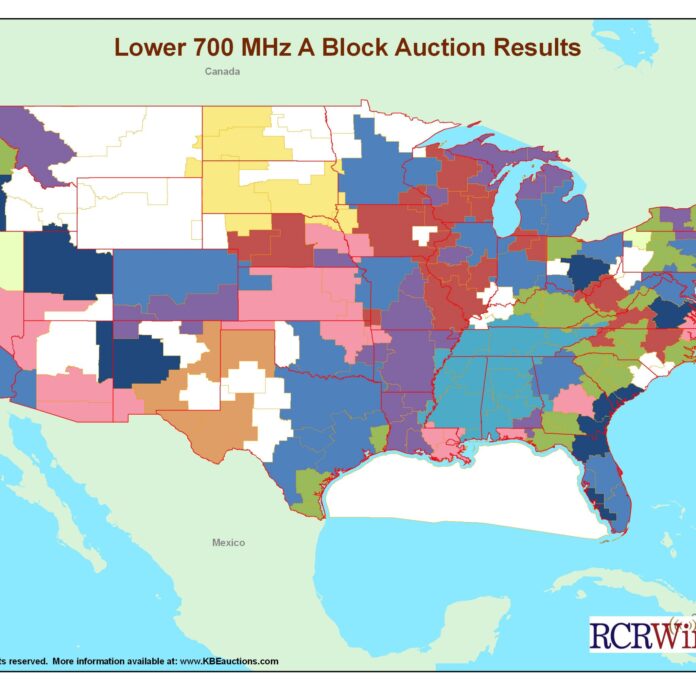The Federal Communications Commission is taking the next step in insuring interoperability across the lower 700 MHz band, having approved a report and order on the controversial subject.
In a statement this afternoon, the FCC said terms of the order “serve the public interest by encouraging
efficient use of spectrum and enabling consumers to enjoy the benefits of greater competition.”
“The standards developed by several wireless providers, along with the Competitive Carriers Association, will also give consumers more choice in using their devices with large and small carriers alike and will promote widespread deployment of mobile broadband services, especially in rural areas,” the FCC noted.
The order will address interference concerns from the D- and E-Block licenses impending on operations in the lower A-Block that a number of rural carriers currently control. The issue was pushed to the forefront by the establishment of the Band Class 17 standard that included spectrum licenses in the lower B- and C-Blocks, but did not include the lower A-Block. AT&T was a major proponent of Band Class 17 noting that interference concerns in the lower A-Block could cause service issues for customers if that band was included in the standard. A separate standard – Band Class 12 – was set up to include the lower A-, B- and C-Blocks.
AT&T last month it would be willing to work the FCC and current lower 700 MHz license holders on a solution to disputed interference concerns. In a filing with the FCC, AT&T said it “is committed to supporting lower 700 MHz interoperability for all paired spectrum in the lower 700 MHz band if certain conditions are met.” Those conditions included harmonization on rules governing maximum signal power for spectrum in the E-Block; and the eventual implementation of network technology allowing for support of both Band Class 12 and Band Class 17.
The FCC in its latest statement said it would take AT&T up on that offer.
“The order also proposes to modify AT&T’s B- and C-Block licenses to incorporate the commitments of AT&T and makes changes in construction requirements and deadlines for various E-Block licensees in the Lower 700 MHz band,” the FCC stated.
Dish Network, which is a substantial holder of 700 MHz E-Block spectrum licenses, came out in favor of the FCC move.
“We applaud the FCC, under Chairwoman Clyburn’s leadership, for their extraordinary efforts in bringing the industry together to reach a consensus on interoperability, which is reflected in today’s order,” the company noted in a statement. “Dish worked cooperatively with the commission to help achieve the important benefits of interoperability and to unlock additional mobile broadband spectrum for the benefit of all Americans.”
Interoperability in the lower 700 MHz spectrum bands revolves around interference concerns between television transmissions operating in channel 51 adjacent to the A-Block uplink channel and from the unpaired E-Block slice of 700 MHz spectrum operating adjacent to the A-Block downlink channel. AT&T has contended that this interference impacts use of the A-Block license and thus pushed to have the Band Class 17 standard approved that includes just the lower B- and C-Block 700 MHz licenses.
Opponents to AT&T’s plans have noted that interference is not an issue and that the lower A-Block licenses should be included with the B- and C-Block to form Band Class 17. This group includes a number of wireless carriers that acquired A-Block spectrum licenses in 2008, but have been unable to tap into a larger ecosystem to acquire equipment at lower prices as well as have been unable to tap into potential nationwide roaming agreements.
Bored? Why not follow me on Twitter?


